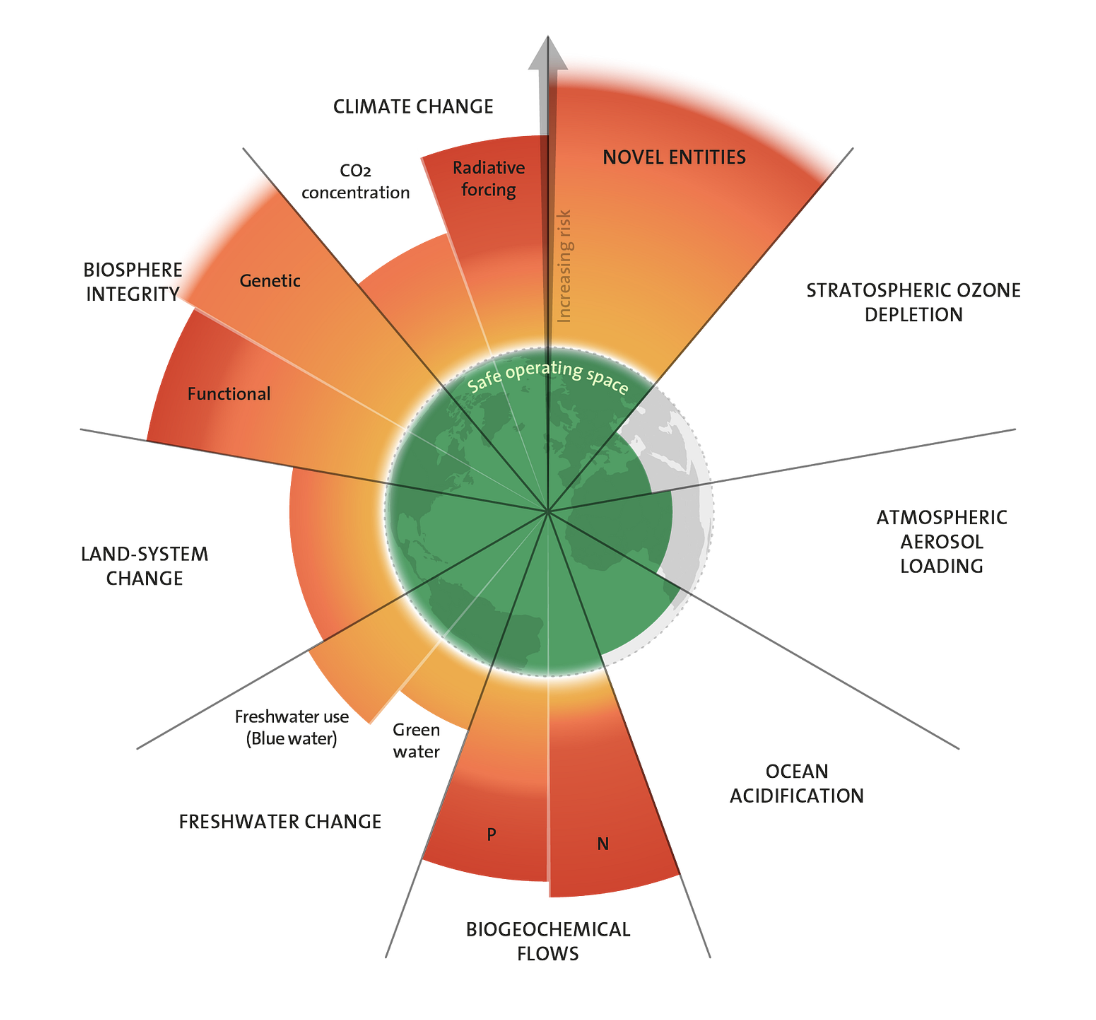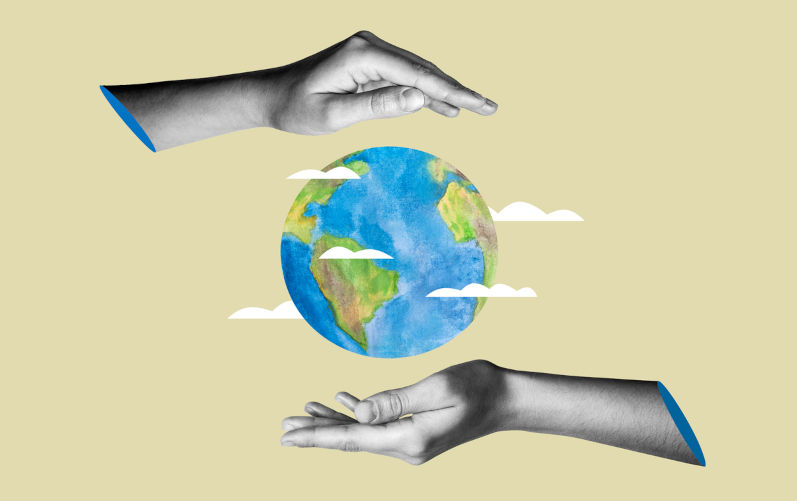The Earth is under chemical attack
August 29, 2025
The largest of the 10 catastrophic threats now facing humanity is global poisoning, yet it receives less attention from science, government and society than all the others.
Earth, and all life on it, are being saturated with man-made or -released chemistry in an event unlike anything in its history. Unknown — even to itself — a single species has launched a universal chemical war on life on Earth.
Humans emit more than 220 billion tonnes of chemical substances a year, in a cumulative toxic tsunami that is disabling and killing people and wildlife around the planet.
Each moment of our lives we are exposed to thousands of these substances. They enter our bodies with every breath, meal or drink we take, the clothes and cosmetics we wear, the things we use daily in our homes, workplaces and travel. They impact every person, every day, from conception to death.
The poisoning of our planet through human chemical emissions is arguably the largest human impact of all upon the Earth. In volume, it is four to five times greater than our climate emissions (which are a part of it), and three times more lethal than the estimated climate death-toll. It is the mega-threat least understood by society, monitored by science or regulated by government. It has mainly occurred over the last 50 years, due to a massive global surge in chemical use and materials extraction.
Scientific assessment has identified more than 350,000 man-made chemicals. The US Department of Health estimates 2000 new chemicals go on the market every year and the Smithsonian says 1000 new compounds are now being synthesised every hour. The UN Environment Program warns about a third of these “are persistent, able to accumulate in humans and animals and are toxic”.
The World Health Organisation estimates that 13.7 million people — one in every four — die each year from diseases caused by “air, water and soil pollution, chemical exposures, climate change and ultraviolet radiation”, caused by human activity.
Six hundred million years of human life are lost annually from disability caused by the same factors, posing a colossal economic burden to society, as well as much needless suffering. In a devastating irony, medicine now treats many of the victims with a fresh battery of chemicals, known as pharmaceuticals, with little regard for other exposures they have had or the mixtures they create.
Human chemical emissions are thus responsible for the largest mass killing in history. The current death rate is twice that of World War II, yet efforts to end it are almost nonexistent. Human chemical emissions also play a key role in the global extinction of wildlife.
Examples of the toxic avalanche include:
- Manufactured chemicals – 2.5 billion tonnes a year
- Hazardous waste – 400 mt/yr
- Coal, oil, gas etc – 15 billion tonnes a year
- Lost soil – 75 Gt/yr
- Metals and materials – 75 Gt/yr
- Mining and mineral wastes – 40-90 billion tonnes a year
- Water (mostly contaminated with above wastes) – 9 trillion tonnes a year.
This makes it clear that only a tiny proportion (1-2%) of total human chemical emissions (220mt+/yr) are deliberately manufactured, though these are by far the most toxic. Most of our emissions consist of materials released into the biosphere by mining and mineral extraction, farming, construction, transport, manufacturing and waste disposal. While many of these are not very toxic, even harmless, they can nevertheless pollute air, water, food, cities and homes, adding to a level of human chemical exposure which simply did not exist 50 years ago, or at any previous time in our history. They can carry highly toxic substances such as mercury, cadmium, chromium, arsenic, aluminium and lead, as well as many industrial poisons, which thus get into our living environment and bodies in ever increasing amounts.
The impact can be clearly seen in the most recent update to Planetary Boundaries by the Stockholm and Potsdam Centres. Here the category “novel entities” (an euphemism for man-made chemicals) is clearly worst of all the human impacts, taking us well into the danger zone. Global flows of nitrogen and phosphorus, released in record amounts by humans, are also well past the safe limit (green) and are implicated in the spread of ocean dead zones, dying lakes and rivers.

Figure 1. Planetary Boundaries science shows just how far outside the safety limit human chemical emissions have gone, constituting a bigger threat than climate change.
Climate change is studied by thousands of scientists worldwide, and documented in tens of thousands of scientific papers. It has an international body, the IPCC, to keep track of it. The contrast with chemical emissions is grotesque. There is no concerted global effort to measure human chemical release or document its catastrophic effects on people or the environment at large. The work is fragmentary, at best, focused on particular substances of groups of substances. There is no serious attempt to assemble a global understanding of the greatest threat ever to confront the human species.
Partly this is due to a failure in scientific ethics. The massive chemical release of the past half-century was partly driven by chemical science itself and by the petrochemical industry it serves, working together, without proper public oversight or scrutiny. Most of the new chemicals released were never tested for human or environmental safety because industry didn’t wish to bear the cost, or learn the results. As a result, thousands of new substances are released which take decades and countless deaths for their toxicity to become clear.
As with fossil fuels, our chemical emissions have exploded into a catastrophic threat due to overpopulation and overconsumption. They now affects every person, plant and animal on the planet due to the global chemical circulation now operating.
Health effects
Scientists routinely find industrial toxins in new-born babies, in mother’s milk, in the food chain, in domestic drinking water and in homes worldwide. They have been detected from the peak of Mt Everest (where the snow is so polluted it doesn’t meet drinking water standards) to the depths of the oceans, from the hearts of our cities to the remotest islands.
The hyper-toxic mercury found in the fish we eat is fallout from the burning of coal, gold mining and other industrial processes, and increases every year. Our seafood and meat are contaminated with microplastics made from petroleum, which then enter our blood, liver and brain, with untold harmful effects.
There is global concern at the death of honeybees (as well as adverse human health effects) from five million tonnes of agricultural pesticides used every year. Insect pollinators fertilise about a third of the world’s food crops, so if we kill them off, we stand to lose much of the global food supply. At the same time, we kill the insects on which birds, frogs, lizards and fish in turn depend, accelerating the process of extinction.
Waterways worldwide are flooded with pharmaceuticals, female hormones and recreational drugs, affecting both drinking water and wildlife.
While there has been focus on individual aspects of the assault — pesticides, plastics, endocrine disruptors, nanochemicals, forever chemicals, carcinogens and industrial neurotoxins — there has been scant effort to understand the big picture, and how these many substances interact.
An issue routinely ignored by government regulators and chemical corporations is that chemicals act in combination, occur in mixtures and undergo constant change. A single chemical may not occur in toxic amounts in one place, but combined with thousands of other chemicals it may contribute a much larger risk to the health and safety of the whole population and to the environment that supports us. Also, many different chemicals may attack the same organs, increasing the health impact.
Medical science is increasingly linking disorders such as the global obesity pandemic, cancers, collapsing sperm counts, heart disease and brain diseases such as autism, ADHD, depression and loss of intelligence to the growing flood of poisons to which humans are exposed daily.
Despite attempts to regulate chemical use, only 34 out of 350,000 chemicals have so far been banned. At this rate it will take more than a million years to regulate them all. Meanwhile, science adds 2000 new chemicals to the planet every year.
In many countries, such as the US, the petrochemical industry has influenced government to roll back the laws that protect public health, in the interest of profit, an act tantamount to mass manslaughter.
Solutions to the chemical crisis confronting humanity exist, but the will of society or government to impose them does not. They include:
- A new Human Right Not To Be Poisoned. Without such a right, there will never again be a day in history when we are free from man-made poisons.
- A global alliance of consumers and concerned citizens prepared to reject toxic products or products made with toxic processes – and give industry the economic incentive to switch to “green chemistry” and other safer systems.
- An international body (like the IPCC) to measure and document the chemical tsunami and its effects on human and environmental health.
- A global system to inform citizens what chemicals are in the food and consumer products they buy and their health consequences.
- A ban on all fossil fuels, which are the main source of toxic chemicals and their replacement with nontoxic renewables.
- A circular world economy, where production eliminates or avoids toxic wastes.
- Adoption of Zero Waste policies in all countries.
- Far stricter controls over mining wastes, soil erosion, manufacturing and other emissions.
- A global war on plastics, endocrine disruptors, nanochemicals, forever chemicals, carcinogens, industrial neurotoxins and other categories of health-destroying substances.
- Ethical training and a Hippocratic Oath for all young scientists.
Details of the Earthwide chemical assault and what we can do about it are in: Earth Detox; How and why we must clean up the Planet.
The views expressed in this article may or may not reflect those of Pearls and Irritations.
